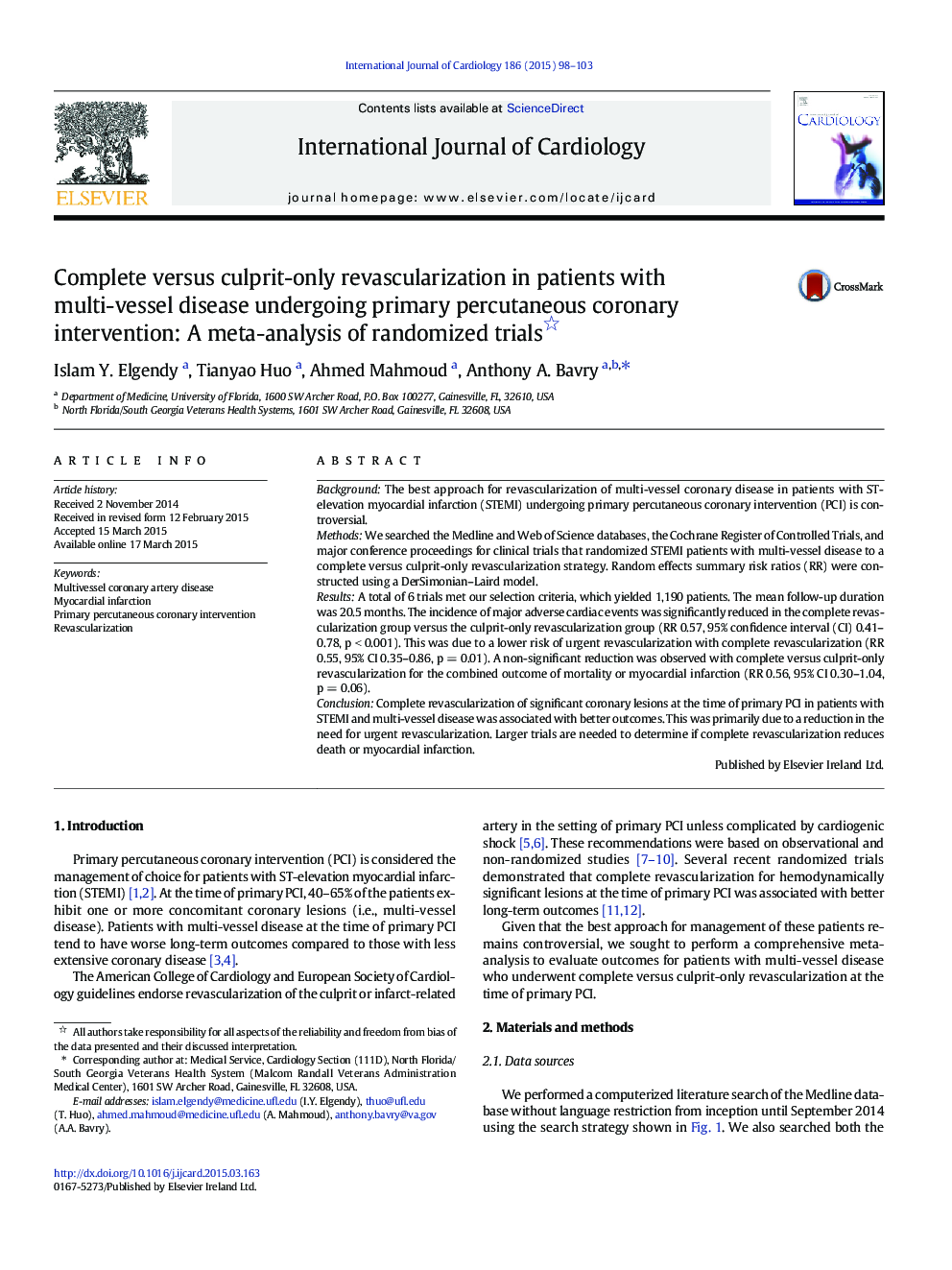| Article ID | Journal | Published Year | Pages | File Type |
|---|---|---|---|---|
| 5967653 | International Journal of Cardiology | 2015 | 6 Pages |
BackgroundThe best approach for revascularization of multi-vessel coronary disease in patients with ST-elevation myocardial infarction (STEMI) undergoing primary percutaneous coronary intervention (PCI) is controversial.MethodsWe searched the Medline and Web of Science databases, the Cochrane Register of Controlled Trials, and major conference proceedings for clinical trials that randomized STEMI patients with multi-vessel disease to a complete versus culprit-only revascularization strategy. Random effects summary risk ratios (RR) were constructed using a DerSimonian-Laird model.ResultsA total of 6 trials met our selection criteria, which yielded 1,190 patients. The mean follow-up duration was 20.5 months. The incidence of major adverse cardiac events was significantly reduced in the complete revascularization group versus the culprit-only revascularization group (RR 0.57, 95% confidence interval (CI) 0.41-0.78, p < 0.001). This was due to a lower risk of urgent revascularization with complete revascularization (RR 0.55, 95% CI 0.35-0.86, p = 0.01). A non-significant reduction was observed with complete versus culprit-only revascularization for the combined outcome of mortality or myocardial infarction (RR 0.56, 95% CI 0.30-1.04, p = 0.06).ConclusionComplete revascularization of significant coronary lesions at the time of primary PCI in patients with STEMI and multi-vessel disease was associated with better outcomes. This was primarily due to a reduction in the need for urgent revascularization. Larger trials are needed to determine if complete revascularization reduces death or myocardial infarction.
